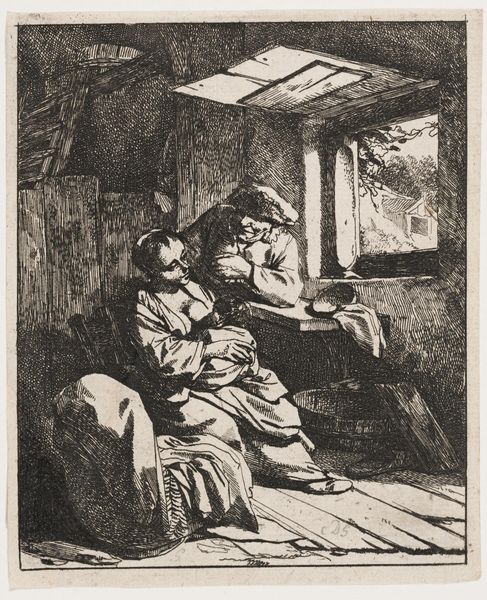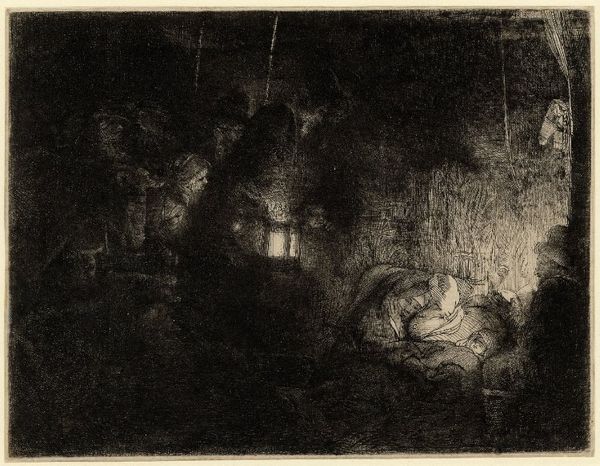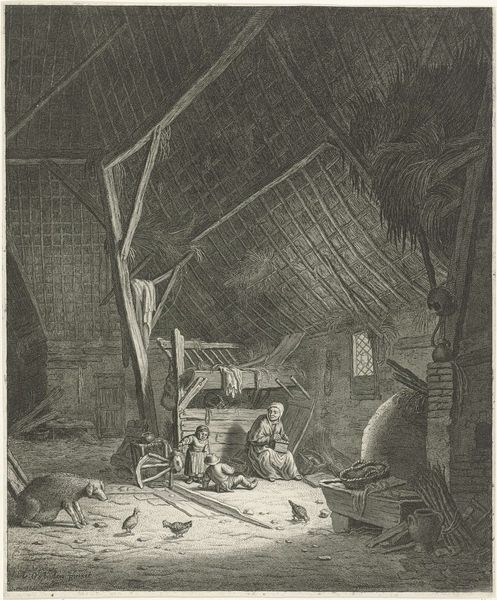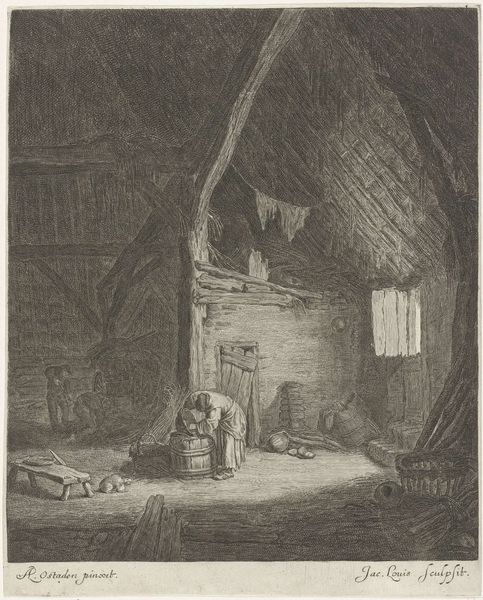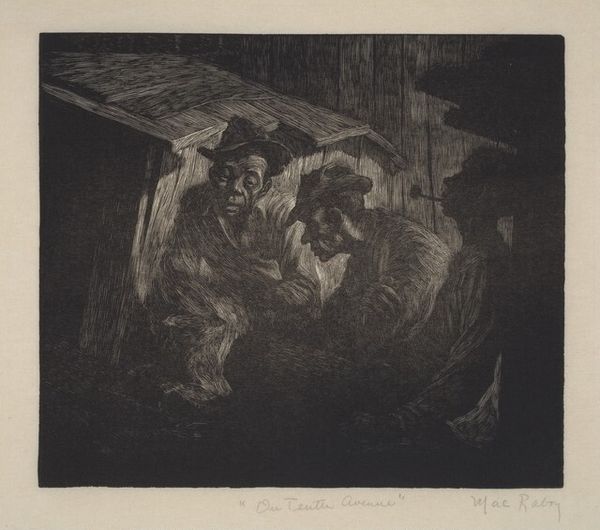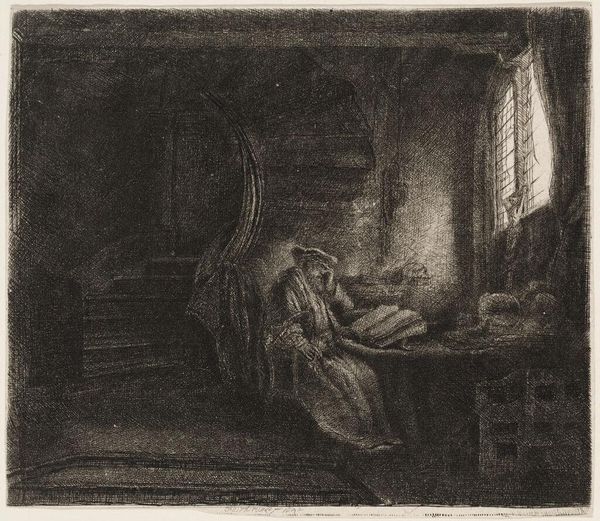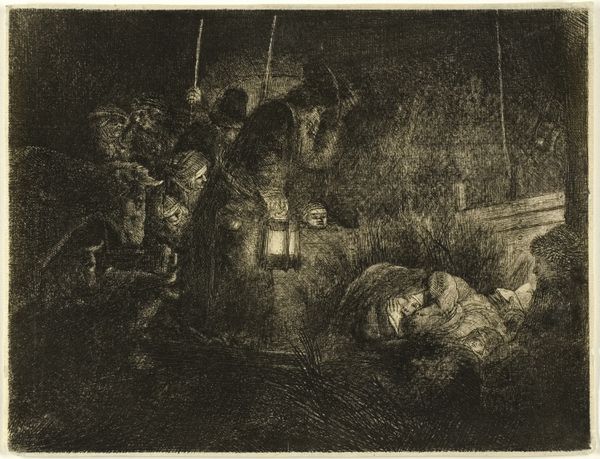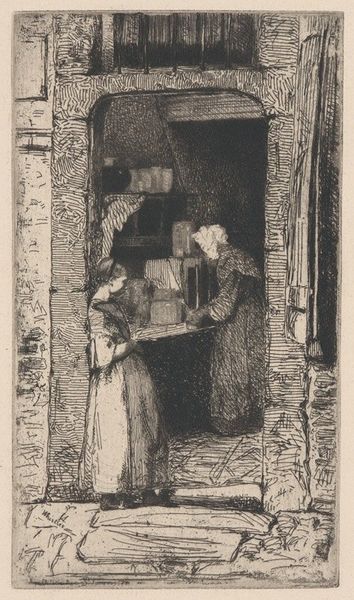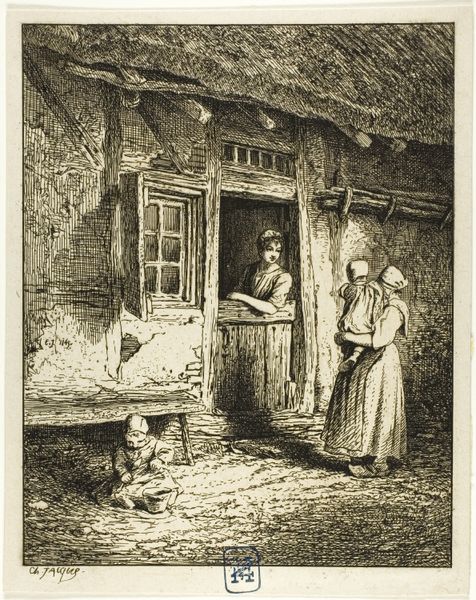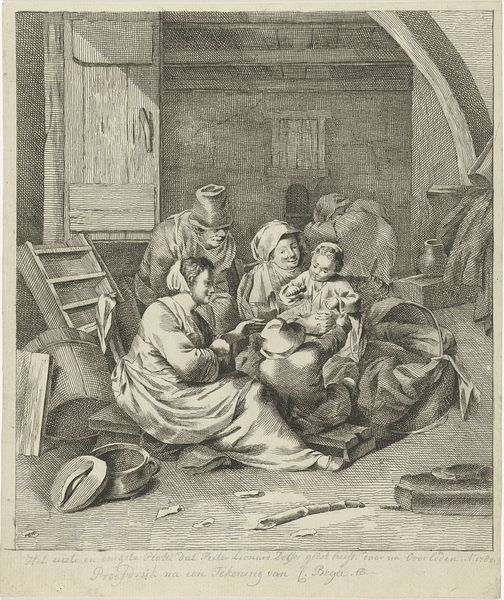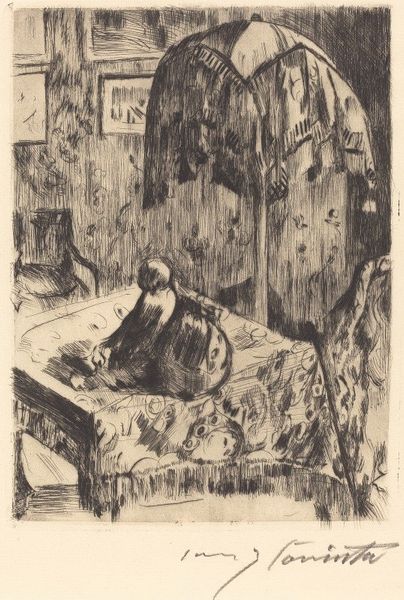
print, etching
#
portrait
# print
#
pen sketch
#
etching
#
pencil sketch
#
german-expressionism
#
line
#
history-painting
#
realism
#
monochrome
Copyright: Public domain
Curator: Kathe Kollwitz’s somber etching, “Need,” created in 1897, presents us with an intense tableau of despair. What are your initial thoughts? Editor: The stark contrast of light and shadow immediately strikes me. The overwhelming darkness, punctuated by that small window, creates an oppressive atmosphere. The texture is really grabbing me here. Curator: Indeed, Kollwitz uses etching with tremendous skill to create a dense, almost suffocating space. Observe how the lines aren't just descriptive; they are expressive, building form while simultaneously conveying emotional weight. The repetition, the scratching. Editor: Exactly! The roughness of the lines mirrors the rawness of the subject matter. It appears like she used many short, jumbled strokes and a gritty surface, what kind of press could yield such an uneven result? You feel the labor in her work. How did she physically achieve such a striking effect? Curator: Consider her focus on depicting the plight of the working class and the devastating impact of poverty. The anguished mother, her head in her hands, surrounded by her family... each element contributes to the overall sense of hopelessness. There is incredible economy here. A few masterful strokes. Editor: And it's important to consider the materials readily available to Kollwitz. Printmaking allowed for wider distribution, a political act in itself, enabling her message to reach a broader audience beyond the elite art circles. A socialist in ink! I see the hand, the struggle. Curator: You highlight a critical point. By embracing printmaking, she democratized her art, making it accessible and furthering her social agenda. This etching becomes more than just a portrait; it's a powerful statement. Editor: A statement etched in both acid and suffering. Considering its title, "Need", this piece lays bare the very tangible human cost of societal inequities in 1897 Germany, but really any time, in any industrial center. The child there looks peaceful, perhaps unaware of what lies ahead. Curator: Reflecting on Kollwitz’s "Need," it's clear how formal elements can amplify a profound social commentary, achieving enduring resonance through the sheer intensity of line and form. It speaks to human suffering using monochrome reduction and skillful composition. Editor: I concur. Kollwitz not only created a visually compelling artwork but also harnessed the very process of art-making to expose the hardscrabble reality of the working class experience, asking the audience to reckon with our collective responsibility.
Comments
No comments
Be the first to comment and join the conversation on the ultimate creative platform.

